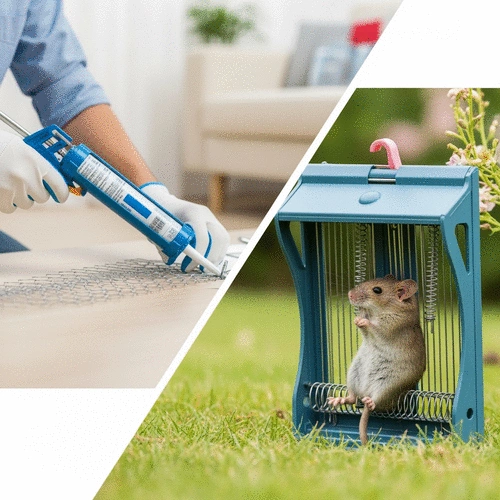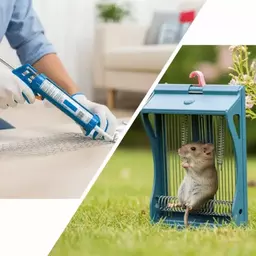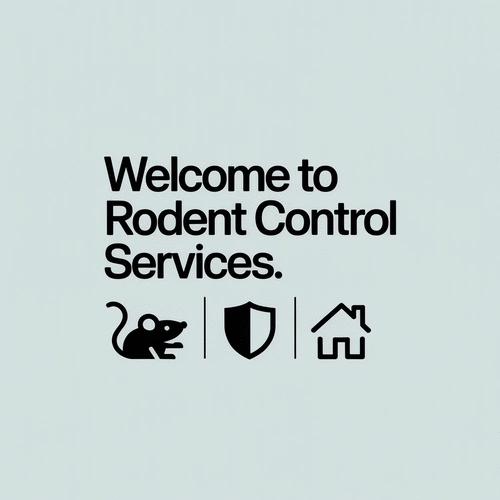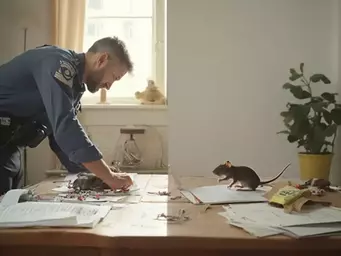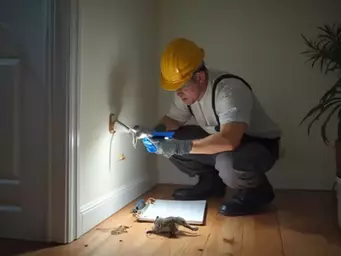Every space can be a fortress against rodents—if you know the right strategies. Understanding the balance between proactive and reactive measures can be key to a pest-free environment. Let’s unpack the essentials of effective rodent control!
What You Will Learn
- Rodent exclusion focuses on prevention by sealing entry points, reducing the chances of future infestations.
- Trapping is a reactive method aimed at eliminating existing rodent populations, crucial once signs of infestation appear.
- Understanding the behavior of rodents helps tailor both exclusion and trapping methods for more effective management.
- Investing in exclusion methods may require higher initial costs but leads to long-term savings and a pest-free environment.
- When facing severe infestations or complex situations, seeking professional help is often the best course of action.
- DIY strategies, like sealing cracks and maintaining cleanliness, can effectively deter rodent activity in your space.
Rodent Control: Exclusion vs. Trapping
This visual compares two primary rodent control strategies: Exclusion (prevention) and Trapping (elimination), highlighting their methodologies, costs, and long-term benefits.
Rodent Exclusion (Prevention)
Methodology: Proactive prevention.
- Sealing entry points (gaps, pipes, windows).
- Using materials like steel wool and caulk.
Cost: Higher initial investment.
- Reduces ongoing pest management costs.
- Minimizes property damage.
Long-term value: High saving potential.
Rodent Trapping (Elimination)
Methodology: Reactive elimination.
- Various traps (snap, live catch).
- Targets existing populations.
Cost: Lower initial cost.
- Potential for higher long-term expenses.
- Requires ongoing effort if infestations persist.
Long-term value: Less predictable, potentially higher.
Understanding Rodent Control: Exclusion vs. Trapping
When it comes to maintaining a rodent-free environment, understanding the distinction between rodent exclusion and trapping is crucial. Each method serves a distinct purpose, and knowing when to use one over the other can make all the difference in your pest management strategy. As someone who has spent years in the pest control industry, I've seen firsthand how effective these methods can be when applied appropriately.
In this section, we’ll delve into the definitions of rodent exclusion and trapping, their key differences, and how understanding these concepts can empower you to create a more effective rodent management plan.
Defining Rodent Exclusion and Trapping
What is Rodent Exclusion?
Rodent exclusion refers to the proactive measures taken to prevent rodents from entering a space. This involves identifying and sealing potential entry points, such as gaps around pipes, doors, and windows. By employing materials like steel wool and caulking, you can block these entryways and deter rodents from invading your home or business. This proactive approach is highlighted in studies that emphasize the importance of effective structural pest management.
Exclusion is often the first line of defense in pest management. By focusing on prevention, you reduce the chances of a rodent infestation right from the start. It’s essential to think like a rodent—consider where they might sneak in and take action before they have a chance to set up camp!
How Does Rodent Trapping Work?
On the other hand, rodent trapping is a reactive method designed to eliminate existing rodent populations. Various traps are available—ranging from snap traps to live catch traps, each with its own effectiveness depending on the situation. The goal here is to reduce the current population quickly and efficiently.
Using traps can be particularly effective when you notice signs of rodent activity, such as droppings or gnaw marks. Regularly checking and resetting traps is key to maintaining control over the rodent situation. Remember, while trapping is a vital tool, it should ideally be used in conjunction with exclusion efforts for comprehensive rodent control.
Key Differences Between Rodent Exclusion and Trapping
Methodology Comparison: Prevention vs. Elimination
The primary difference between exclusion and trapping lies in their methodology. Exclusion focuses on prevention, aiming to keep rodents out before they can enter and reproduce. In contrast, trapping targets existing populations for elimination, addressing the problem once it has already occurred.
- Exclusion: Preventive measures, sealing entry points.
- Trapping: Reactive measures, catching and removing rodents.
- Best Practice: Employ both methods for effective control.
Understanding these methodologies can guide you in making informed decisions about your pest management strategy. It’s often beneficial to implement both tactics, ensuring long-term success in keeping your space rodent-free.
Rodent Populations: Understanding Their Behavior
To effectively manage rodent populations, it’s essential to understand their behavior. Rodents are highly adaptable creatures, known for their ability to reproduce quickly. Did you know that a single pair of mice can produce up to 200 offspring in a year? This rapid reproduction highlights the urgency of addressing rodent issues promptly. Research on rodent population dynamics underscores the importance of timely intervention.
By being aware of their habits, such as their preferred nesting sites and food sources, you can tailor your exclusion and trapping methods accordingly. For instance, if you notice rodent droppings near a pantry, that’s a sign to not only set traps but also seal off food sources and entry points around that area.
Frequently Asked Questions (FAQs) about Rodent Control
Q1: What is the main difference between rodent exclusion and trapping?
A1: Rodent exclusion is a proactive strategy focused on preventing rodents from entering a space by sealing entry points. Trapping, on the other hand, is a reactive method used to eliminate existing rodent populations once an infestation has occurred.
Q2: Is rodent exclusion a cost-effective solution in the long run?
A2: Yes, while rodent exclusion may require a higher initial investment for materials and labor to seal entry points, it leads to significant long-term savings by reducing ongoing pest management costs and minimizing property damage from recurring infestations.
Q3: When should I consider hiring professional pest control services?
A3: You should consider hiring professional pest control services for severe infestations, complex situations that require specialized knowledge, or if you have limited time for DIY efforts. Professionals can provide tailored solutions.
Q4: What are some effective DIY tips for rodent management?
A4: Effective DIY tips include sealing cracks and openings in your home, storing food securely in airtight containers, and maintaining a clean environment to deter rodents from finding food sources and nesting sites.
Q5: How quickly can rodents reproduce?
A5: Rodents can reproduce very quickly. A single pair of mice, for example, can produce up to 200 offspring in a year, which emphasizes the need for prompt and effective control measures.
Interactive Poll: Your Thoughts on Rodent Control
As we discuss the effectiveness of rodent exclusion versus trapping, we want to hear from you! Which method do you believe is more effective in achieving long-term rodent control?
Making an Informed Decision for Rodent Control
When it comes to choosing the right method for rodent control, understanding the cost implications and potential returns on investment (ROI) is crucial. Many people wonder whether to invest in rodent exclusion or rely on traps. Let’s explore these financial considerations to help you make an informed decision!
Cost Comparison and ROI Analysis of Exclusion vs. Trapping
First, let’s delve into the financial side of rodent exclusion. Initially, the costs may seem higher due to the materials and labor involved in sealing potential entry points. However, this is a long-term investment. By preventing rodents from entering your space, you significantly reduce the chances of recurring infestations.
Calculating the Long-Term Value of Exclusion
- Reduces ongoing pest management costs
- Minimizes property damage over time
- Enhances overall health and safety in your environment
By investing in exclusion methods, you’re not just spending money; you’re securing a pest-free future! This approach can save you from the headache and expenses of repeated infestations.
Understanding Short-Term Costs vs. Long-Term Gains
On the other hand, trapping can be less expensive upfront but may require ongoing costs, especially if infestations persist. Here’s a quick comparison:
- Exclusion: Higher initial investment; lower long-term costs
- Trapping: Lower initial costs; potential for higher long-term expenses
Understanding these dynamics can help you choose wisely. Think about what suits your situation best and consider how much you’re willing to invest in your peace of mind!
Professional Help vs. DIY Approaches
Another important factor in your decision-making process is whether to tackle rodent control yourself or seek professional help. I often encounter homeowners unsure about when to call in the pros. Let's break it down.
When to Consider Hiring Pest Control Services
- Severe infestations that need immediate attention
- Complex situations requiring specialized knowledge
- Limited time for DIY efforts
If you find yourself facing any of these challenges, don’t hesitate to reach out to Rodent Control Services. We can provide tailored solutions that fit your needs!
DIY Tips for Effective Rodent Management
For those who prefer a hands-on approach, there are plenty of DIY methods you can employ. Here are some effective strategies:
- Seal cracks and openings in your home
- Keep food stored securely
- Maintain a clean environment to deter rodents
Using these tips not only empowers you but also contributes to a safer space. However, always assess your situation to ensure you're making the best choice.
Utilizing Bait Stations and Live Traps in DIY Efforts
Bait stations and live traps can be particularly effective for DIY rodent management. They provide a humane way to address rodent issues while allowing you to control the situation. Here are some considerations:
- Place bait stations in areas where rodent activity is visible
- Check traps regularly to ensure effectiveness
- Consider your local regulations regarding trapping
By utilizing these methods, you can manage rodent populations without the need for strong chemicals or complicated systems!
Final Thoughts on Rodent Exclusion and Trapping
As we wrap up our exploration of rodent control methods, remember that making the right choice depends on your unique needs and circumstances. Whether you lean towards exclusion or trapping, understanding the nuances of each method is vital for effective pest management!
Summary of Key Takeaways for Effective Pest Control
Balancing immediate action with long-term solutions is essential in rodent control. Always weigh the costs, benefits, and potential outcomes when choosing your approach. Your health, safety, and peace of mind deserve consideration!
Call to Action: Taking the Next Steps in Pest Control
If you’re unsure about the best course of action, I encourage you to consult with experts like those at Rodent Control Services for customized solutions that fit your specific needs. We’re here to help!
Utilizing Resources for Ongoing Education on Rodent Control
Don’t forget to check out our educational resources and guides, which provide valuable insights on maintaining rodent-free spaces. Knowledge is power, and we're committed to equipping you with the tools for success!
Understanding Local Regulations and Safety Considerations
Lastly, always keep in mind your local laws regarding pest control practices. Staying informed ensures that you manage pests safely and responsibly, contributing to a healthier environment for everyone! For more information on effective strategies, you can refer to resources like integrated pest management practices.
Recap of Key Points
Here is a quick recap of the important points discussed in the article:
- Rodent exclusion involves proactive measures to prevent rodents from entering by sealing entry points.
- Rodent trapping is a reactive method aimed at eliminating existing rodent populations.
- Utilizing both exclusion and trapping methods is the best practice for effective rodent control.
- Understanding rodent behavior helps tailor exclusion and trapping strategies for better results.
- Consider the long-term cost benefits of exclusion versus the short-term savings of trapping.
- Evaluate whether to manage rodent control yourself or to seek professional pest control services based on the severity of the infestation.

